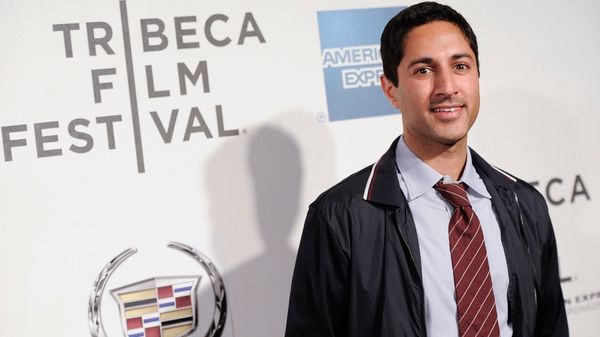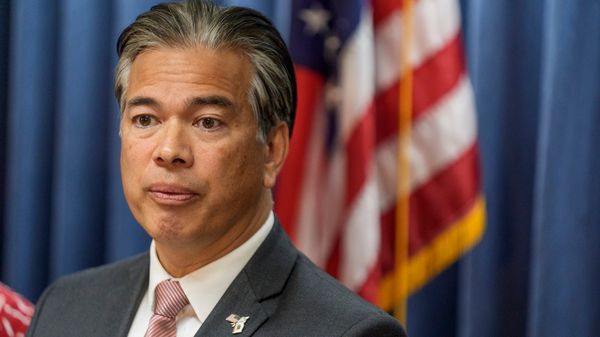
June 13, 2018
AP FACT CHECK: Trump Bobbles Facts on NKorea History, Nukes
Matthew Pennington and Calvin Woodward READ TIME: 4 MIN.
President Donald Trump celebrated his historic summit with North Korea's leader with remarks that twisted history and raised false hope that the remains of all missing Americans from the Korean War will be coming home.
A look at some of his statements following his meeting Tuesday in Singapore with Kim Jong Un and how they compare with the facts:
TRUMP'S TWEETS: "Just landed - a long trip, but everybody can now feel much safer than the day I took office. There is no longer a Nuclear Threat from North Korea ... Before taking office people were assuming that we were going to War with North Korea. President (Barack) Obama said that North Korea was our biggest and most dangerous problem. No longer - sleep well tonight!"
THE FACTS: The five-hour nuclear summit gave the two leaders an opportunity to express optimism and make a show of their new relationship. But it didn't nail down how and when the North might denuclearize, or the nature of the unspecified "protections" Trump pledged to Kim and his government. Trump has insisted that strong verification of denuclearization would be included in a final agreement that his team would sort out with the North Koreans later.
So for now, North Korea is still believed to have more than 50 nuclear warheads, with its atomic program spread across more than 100 sites constructed over decades to evade international inspections.
Trump is also wrong to say there was an assumption before he took office that the United States would go to war. President Barack Obama had used sanctions to no avail to try to halt North Korea's nuclear program. But it wasn't until after Trump took office that North Korea's testing of an intercontinental ballistic missile and rhetoric between the two leaders ramped up talk of war. Fears of conflict were particularly acute after Trump dubbed Kim "Rocket Man" and Kim vowed to "tame the mentally deranged U.S. dotard with fire."
___
TRUMP: "Chairman Kim and I just signed a joint statement in which he reaffirms his unwavering commitment to complete denuclearization of the Korean Peninsula. We also agreed to vigorous negotiations to implement the agreement as soon as possible, and he wants to do that. This isn't the past. This isn't another administration that never got it started and, therefore, never got it done."
THE FACTS: He's wrong in suggesting his administration is the first to start on denuclearization with North Korea. The Bill Clinton and George W. Bush administrations both did so.
Clinton reached an aid-for-disarmament deal in 1994 that halted North Korea's plutonium production for eight years, freezing what was then a very small atomic arsenal. Bush took a tougher stance toward North Korea, and the 1994 nuclear deal collapsed because of suspicions that the North was running a secret uranium program. But Bush, too, ultimately pursued negotiations. That led to a temporary disabling of some nuclear facilities, but talks fell apart because of differences over verification.
___
TRUMP: "He actually mentioned the fact that they proceeded down a path in the past and ultimately as you know nothing got done. In one case, they took billions of dollars during the Clinton regime. ... Took billions of dollars and nothing happened." He said of Clinton: "He spent $3 billion and got nothing."
THE FACTS: His numbers are incorrect. The Clinton administration, which he calls a "regime," and the Bush administration combined provided some $1.3 billion in assistance from 1995 to 2008, says the Congressional Research Service, a nonpartisan arm of Congress. Slightly more than half was for food aid and 40 percent for energy assistance.
He's also wrong in saying "nothing happened" in return. North Korea stopped producing plutonium for eight years under the 1994 agreement. Just how much was achieved, though, is in question, because of the suspicions that emerged later that North Korea had been secretly seeking to enrich uranium.
___
TRUMP, on families of missing troops from the Korean War: "They want the remains of their fathers and mothers and all of the people that got caught into that really brutal war, which took place to a large extent in North Korea. And I asked for it today. And we got it. ... So, for the thousands and thousands, I guess way over 6,000 that we know of in terms of the remains, they'll be brought back."
THE FACTS: He's overstating the number of missing service personnel and glossing over the surely impossible odds of locating the remains of "all of the people" more than six decades after the Korean War. Of the nearly 7,800 U.S. troops unaccounted for from the war, about 5,300 were lost in North Korea. Several thousand are still missing in South Korea despite its close alliance and history of cooperation with the U.S.
North Korea and the United States remain technically at war because the 1950-53 fighting ended with an armistice, not a peace treaty. But between 1996 and 2005, joint U.S.-North Korea military search teams conducted 33 joint recovery operations and recovered 229 sets of American remains.
The document signed by Trump and Kim included an agreement to work to repatriate the remains of prisoners of war and those missing in action from the conflict.
___
TRUMP: "I remember a nuclear event took place, 8.8 on the Richter scale, and they announced - I heard it on the radio, they announced that a massive, you know, an earthquake took place somewhere in Asia. And then they said it was in North Korea, and then they found out it was a nuclear test, I said, I never heard of a Richter scale in the high eights."
THE FACTS: North Korea had no earthquake last year approaching that level of severity. This isn't the first time he has misrepresented the episode.
North Korea tested what it called a hydrogen bomb in September, causing an underground blast so big it registered as a 6.3 magnitude earthquake. Other nuclear tests last year were associated with smaller seismic events.
An 8.8 quake would be 316 times bigger - and release 5,623 times more energy - than a 6.3.
___
Associated Press Writer Anne Flaherty contributed to this report.







